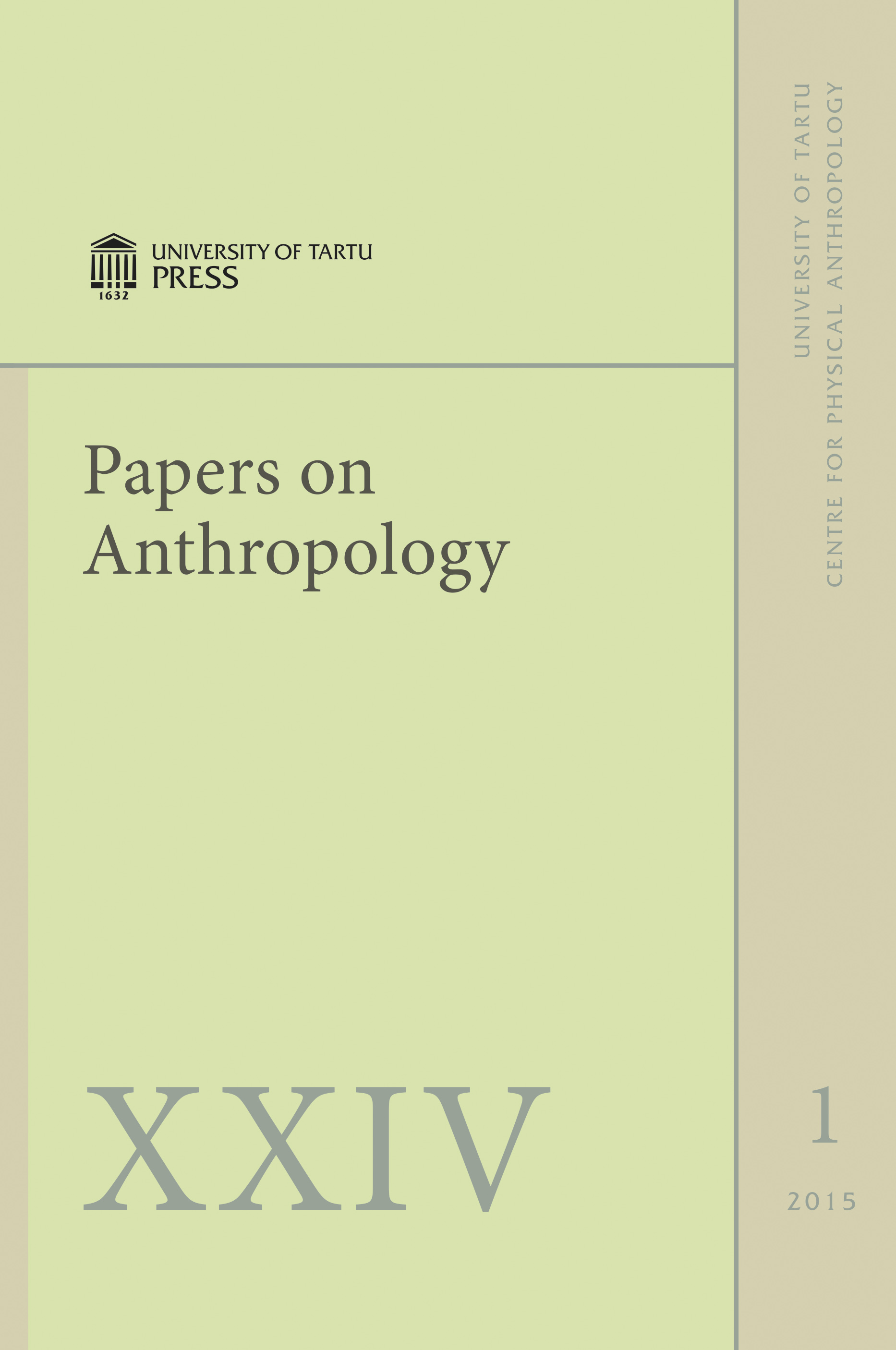Multivariate analysis of the blood pressure variability in Bedouin tribes of South Sinai
DOI:
https://doi.org/10.12697/poa.2015.24.1.03Keywords:
blood pressure, social modernization, South Sinai Bedouins, stressAbstract
Objective: to study intertribal and age-related variability of blood pressure values relative to the body mass index (hereinafter – BMI) in Bedouin tribes of the South Sinai using variance analysis and canonical discriminant analysis.Materials and methods. The samples based on physiological parameters (systolic and diastolic pressure, pulse pressure, and grip strength of the right and left hands) included 304 male and 68 female adults of Gebeliya, Muzeina, and Hamada tribes, and a combined group of representatives of various small tribes referred to as “Others”. Body length, body weight, grip strength of the right and the left hands of 482 adult males and 96 adult females were studied.
Results. The studied Bedouin group, with its reduced weight and height values, stands out against the homogenous Middle East background. The performed variance analysis for the male sample revealed significant (p<0.05) intertribal differences in such parameters as grip strength of the right and the left hands, diastolic pressure, pulse pressure, and BMI. The increased hypertension rate was found in the age cohort of 19–29, probably due to their increased exposure to the stress associated with the ongoing social changes. According to the canonical discriminant analysis of the male sample, the Wilks’ lambda value was 0.72, and the intergroup variability was comparable to the intragroup variability.
Conclusions. The problem of obesity is non-existent in the Bedouins residing in the South of Sinai. In the South Sinai Bedouin group, no significant correlation was revealed between the blood pressure and body mass index values. This fact is accounted for by the emaciation of the population. The authors tend to explain the low pulse pressure value in men (39.2 mm Hg) by the increased peripheral vascular resistance. With the significant degree of transgression in the tribal population, the canonical discriminant analysis showed a minor incongruity in the first canonical variable. The result of the multivariate study of physiological parameters is consistent with our primary hypothesis on the ambiguity of intertribal differences in the groups living under similar environmental conditions. While not denying the existence of some individual mosaic distinctions in the Bedouin tribes, the results of the performed multivariate analysis prove the intertribal differences in the current set of physiological parameters to be insignificant.
Downloads
Download data is not yet available.

